7 Dog Summer Safety Tips
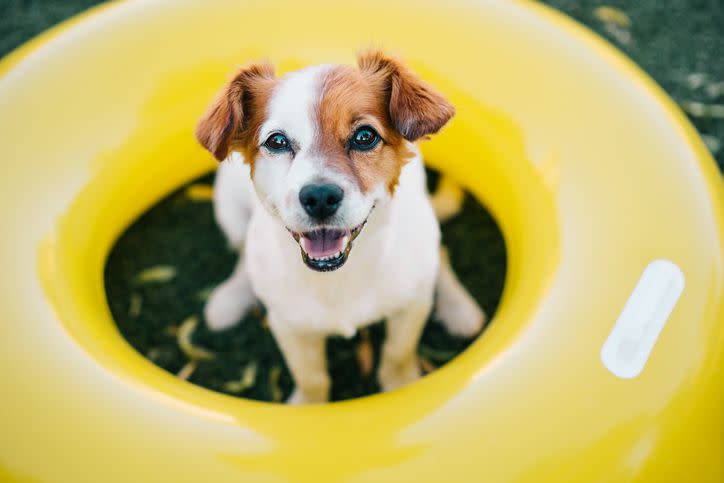
Getty Images/Eva Blanco
Reviewed by Amy Fox
Summer is a great time of year for you and your dog to enjoy and explore the great outdoors. Longer days mean more time for picnic and barbecues, beach or lake trips, hiking, camping, and trips to the dog park.
Don’t forget to keep safety in mind while you and your pup soak up the sun this summer. Follow these tips to ensure your dog stays cool, hydrated, and protected from overheating, burned paw pads, sunburn, and other summer hazards.
Keep Cool
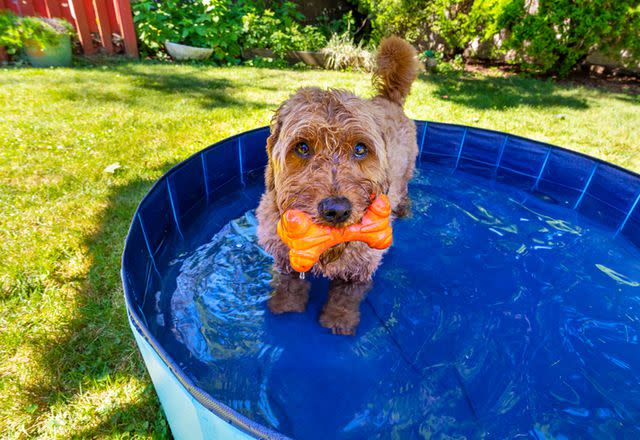
Getty Images/nycshooter
Never underestimate the summer heat. Days that feel tolerably warm to humans can be too hot for dogs, especially those sporting heavy fur coats. Never leave a dog in a parked car. Even when temperatures feel cooler to us, the temperature inside a car can quickly soar to deadly levels.
Outside, provide shade for your dog and plenty of cool, fresh water. Kiddie pools or dog swimming pools are a great way for dogs to cool off in the backyard—just make sure the water is filled very shallow for small dogs and young puppies and that no dog is ever left unsupervised around a pool. The water should be refilled with fresh water for each swim as stale standing water can make them sick if they drink it. If it’s too hot outside, keep your dog indoors with the air conditioning running, use fans to circulate the air and cool down the house, and always make sure they have plenty of fresh drinking water.
Stay Hydrated
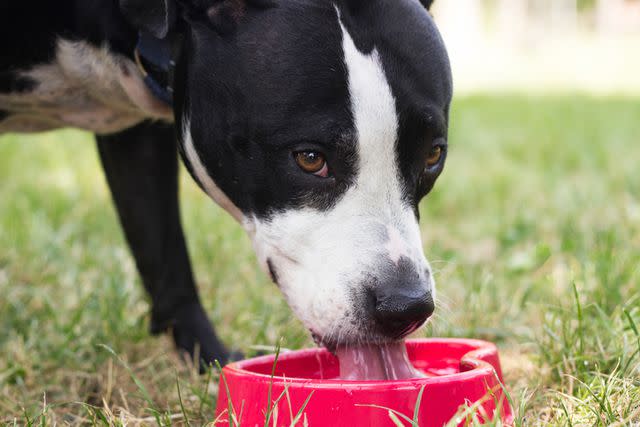
Getty Images/sanjagrujic
Indoors and out, provide your dog plenty of fresh water. Encourage them to drink enough by flavoring the water with a little no-salt-added chicken broth (made without onions and garlic) or tossing a few ice cubes in the bowl to chill the water.
Exercise at Dawn and Dusk
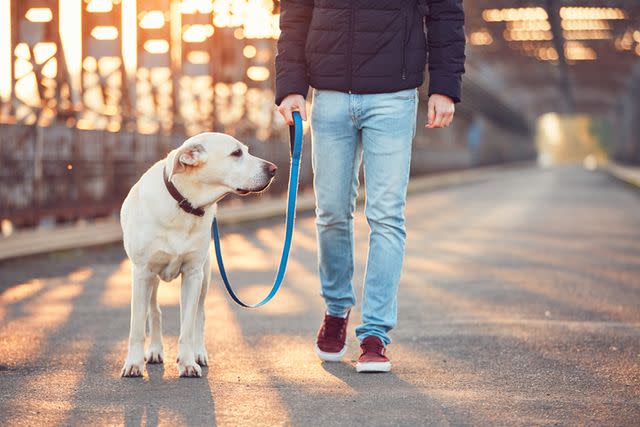
Getty Images/Chalabala
How hot is too hot for dogs? Don’t exercise your dog in the heat of the day when temperatures rise. Walking and especially running in hot temperatures increases a dog’s chance of heatstroke or heat exhaustion, and the hot pavement can burn their sensitive paw pads. Schedule walks and other exercise at dawn or dusk when temperatures are cooler, and stick to indoor activities or water play during the hottest part of the day.
Watch for Signs of Heatstroke

Getty Images/marcoventuriniautieri
Heatstroke occurs when a dog’s body temperature rises to dangerous levels and the dog is unable to cool down by themselves. Educate yourself about the signs of heatstroke in dogs so you can act quickly to help your dog. Heatstroke is an extreme medical emergency. Signs of heatstroke include:
Vigorous panting
Dark red gums or tongue
Thick drool
Tongue hanging far out of the mouth
Lying down
Weakness or dizziness
Vomiting and/or diarrhea
Tremors or seizures
Collapse or loss of consciousness
If you suspect your dog is experiencing heatstroke, move them to a cool place with a fan or air conditioning them and offer cool water. You can wet their body by pouring cool water over them, but don’t submerge their body in water. Aim a fan at them once they are wet to speed up the cooling process, and get to a veterinarian immediately.
Provide Sun Protection

Getty Images/Anita Kot
You might be surprised to learn that dogs can get sunburned, even with all that fur. The most vulnerable areas are the nose, ears and face, where hair is usually sparse. Dogs with white coats and very thin coats are also more susceptible to sunburn. To protect your dog’s delicate skin, apply a dog-safe sunscreen before prolonged sun exposure, and reapply as directed on the product package.
Consider Water Safety
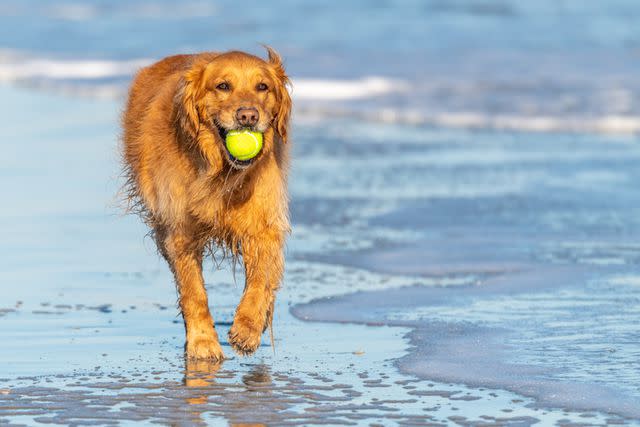
Getty Images/Teresa Kopec
Most dogs can swim, but some breeds don’t swim as well as others. Brachycephalic breeds like bulldogs, French bulldogs, and pugs can struggle in the water. If you’re dog’s swimming skills aren’t excellent, consider using a dog life jacket so they can swim safely.
When playing at the beach, keep a close eye on your dog to make sure they can handle the waves well, and watch your dog for signs of exhaustion. Some dogs have so much fun playing that they don’t want to stop for a break, and exhaustion can be a dangerous combination with strong waves or undertow.
Don’t let your dog drink too much ocean water, as this can make them sick. Salt toxicity can occur when dog drink too much salt water. Bring fresh water for your dog to drink and take them home if they can’t seem to stop drinking the sea water.
In a backyard pool, teach your dog how to enter the pool safely, and make sure your dog knows how to find their way to the stairs to exit. Don’t let your dog drink too much chlorinated pool water, which can upset their stomach. Never leave your dog unsupervised with access to a pool; make sure you have a locked gate that separates your dog from the pool area when you are not watching.
Protect Paws

Getty Images/K R E M
A dog’s paw pads are tough, but dogs can burn their pads if they walk on hot pavement, cement, or sand. On very hot days, it’s best to walk your dog at dawn and dusk, before the temperatures soar. Before letting your dog walk on hot ground, test it first with your hand or your own foot. If it’s too hot for you, it’s too hot for your dog. If your dog must walk on hot ground, protect their paws with dog boots and try to find shady areas for walks.

